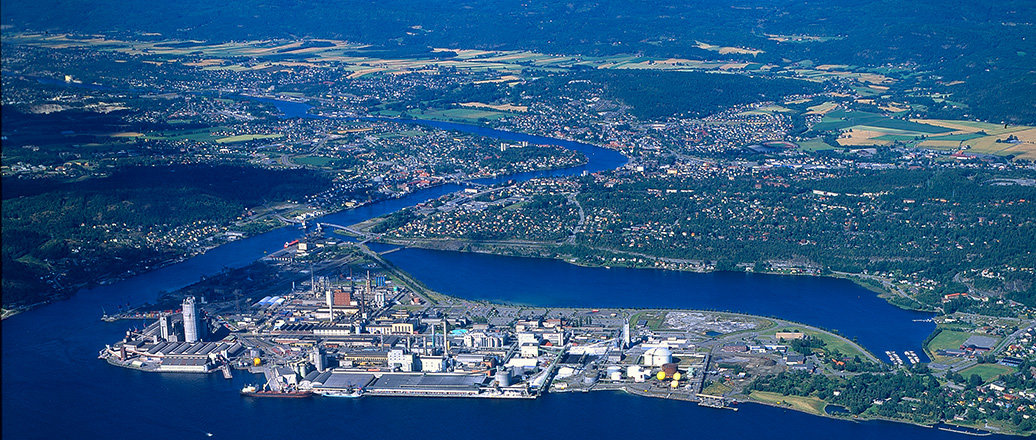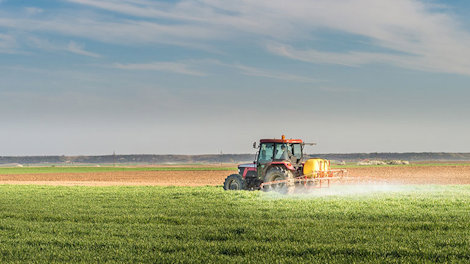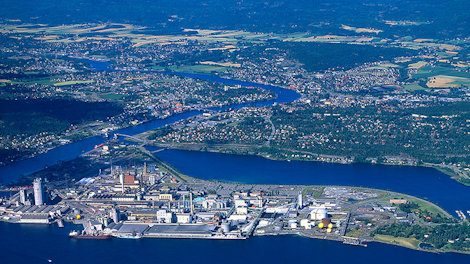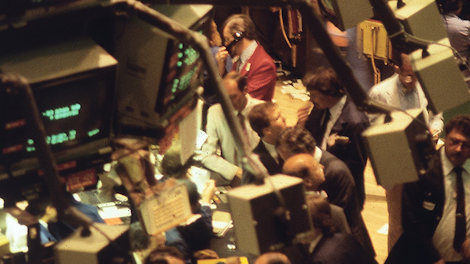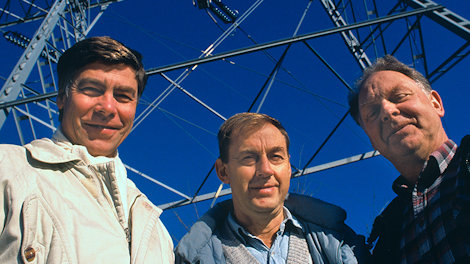In the wake of the massive industrialization process following the Second World War, there followed a growing tide of environmental pollution. Protests were voiced. Rachel Carson’s book “The Silent Spring” (1962) and the UN Year of the Environment were two factors that brought these problems into the limelight. Green campaign groups sprouted up and multiplied.
Norsk Hydro had to face challenges both within the company and outside, and it was clear that measures would require a major effort and large sums of money.
In the sixties, the company’s activities were mainly located in Norway, with production facilities at Rjukan and Notodden, Glomfjord and Porsgrunn. The factories at Porsgrunn accounted for around 60 per cent of the company’s turnover. They had been established at a time when production was the prime issue. The local pollution would have been severe by modern standards.
The start of Hydro’s environmental work
Meanwhile, Hydro had appointed its first engineer with responsibility for measuring and assessing dust emissions at the Herøya industrial park near Porsgrunn in 1958. The company’s involvement and understanding of the problems grew significantly throughout the sixties.
In 1969, Hydro set up a separate environment department in Porsrunn and the Norwegian Institute for Air Research set up a control laboratory nearby, which provided automatic monitoring of industrial air pollution. This control laboratory became the Pollution Control Authority’s first operative district unit, when this body was established in 1974.
Public environmental debate
The start of the seventies marked the beginning of a new phase. Many of Hydro’s serious pollution problems at Herøya were brought to public attention and the debate became more intense. Several energetic environmental organizations were in operation in the Grenland areas around Herøya.
A concession was granted in 1974 for a petrochemicals plant at Rafnes in lower Telemark, and Røykskaderådet (council for smoke damage) drew up the first set of overall environmental requirements. There was a hot debate. The Rafness concession was the first industrial concession in Norway that took into account an overall assessment of environmental impact on a local area.
This was a watershed in Hydro’s history – for the first time ever, the authorities had given an industrial player overall responsibility for its discharges and emissions and the local environment. This was the start of modern environmental work in Hydro.
Chemical production at the Notodden and Rjukan factories was reduced. It stopped completely at Notodden in 1967 and at Rjukan around 1990. This brought the environmental work at these sites into a different league from Porsgrunn and Glomfjord, which had problems with various types of emissions and discharges. Porsgrunn was also home to magnesium and PVC production, which had their own particular environmental challenges.
Porsgrunn led the way
Hydro’s units in Porsgrunn were in many ways leaders in this period. The environmental requirements were stringent, opinions were strong and the process of changing “old” industry into modern factories with lower manning levels, higher production rates and better quality was in full swing. This resulted in the development of new processes and purification technology and the replacement of old and out-dated technologies.
New factories were built and new forms of cooperation between management and employees on increasing efficiency and improving quality were tried out. Attention was directed to improving corporate communication. The effects were soon tangible: production increased. Careful operation of the factories reduced discharges and emissions, and the installation of purification technology resulted in a much cleaner environment.
The environmental debate also changed. Activists became less combative and more cooperative.
The intrinsic link between productivity, quality and safety became clear. Hydro decided therefore to combine these elements and developed a health, safety and environment philosophy that was linked to regularity, efficiency and quality. This form of environmental work developed through the second half of the eighties.
The “Principles for environmental work in Norsk Hydro” (1993) laid down the objectives in this field: “to make consideration for the environment and for future generations the basis for our operations”.
Greater international involvement
In the eighties and nineties, Hydro made increasing numbers of investments outside of Norway in the form of acquisitions and building new plants. The company was particularly concerned to base its operations on the best principles for health, safety and the environment. It was thus able to show that claims that it was exploiting the opportunity to produce “cheap and dirty” in countries with less rigid legislation were unfounded.
Ethics as a corner stone
This brought ethics further to the fore, and was the start of the company’s strong focus on ethics and social responsibility. In the strategy document “Focus for the future” (1999), it is stated that Hydro shall be one of the leading industrial companies within the environment, corporate social responsibility and ethics.
A revision in 1999 included support to the UN Declaration of Human Rights. Hydro had thus established a system that handles the implications – internal and external – of establishing and running industrial activities.
This directive was revised again in 2003, and is now called “Hydro’s Social Responsibility”. It is linked to “Hydro’s HR Policy” LINK and “Hydro’s Code of Conduct”.
In line with the company tradition
At the beginning of the last century, Hydro was already referred to as the “social company”; corporate social responsibility dates back to Sam Eyde and the early years in Telemark.
Hydro’s first managing director believed that industry had an important part to play in the development of modern society, and that new industrial sites should not just take into account the factory buildings, but also the community surrounding them. He totally disagreed with the opinion at the time that workers should be responsible for building up a community themselves.
”Remember – it’s the future we are building!” said Eyde.
Updated: 18 August 2020







